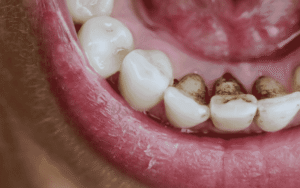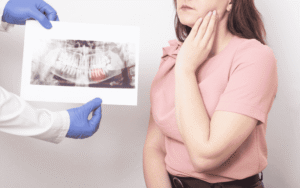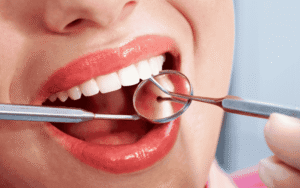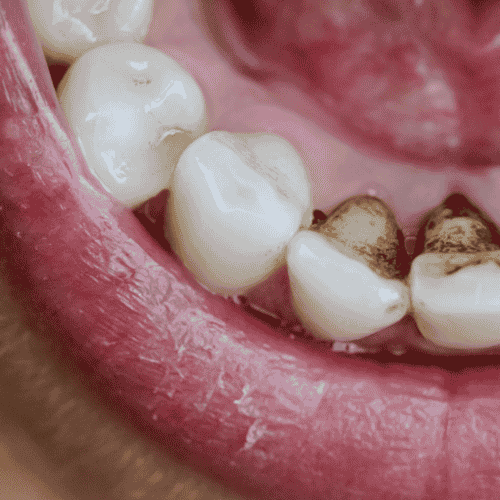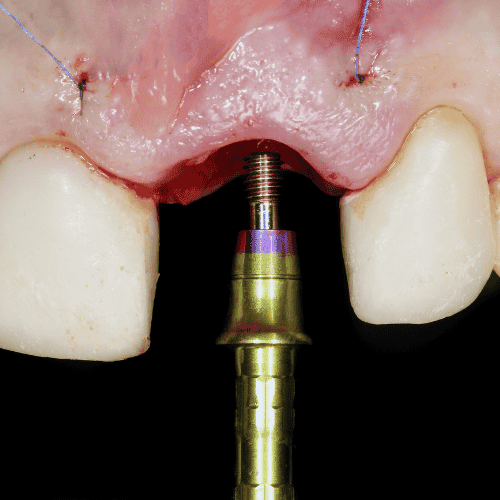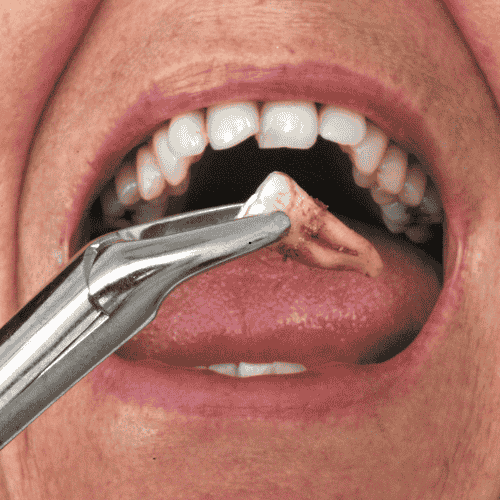People often think that a white, bright smile means that someone is healthy and full of life. Eating, drinking, smoking, and ageing can discolour teeth. Many people struggle to remove coffee spots or whiten their teeth. For many, learning how to get rid of stains on teeth or understanding how to clean brown teeth stains becomes a priority.
Fortunately, there are simple and practical strategies to increase your smile. Professional and natural methods can remove teeth discolouration. For you to feel good about your smile again, this guide will talk about the most common types of spots and give you tried-and-true ways to get rid of them. Ready? Let’s go!
Natural Ways to Get Rid of Teeth Stains at Home
There are many natural ways to whiten your smile, including baking soda, coconut oil pulling, and fruit peels. People often use these methods, but it is important to be careful and know how well they really work before you try them, especially if you’re trying to remove stains from teeth, deal with brown stains on teeth, or handle black stains on teeth that may be more stubborn.
Some natural choices, like pulling with coconut oil, have shown some mild benefits for oral health, but there is not a lot of proof that they can get rid of deep stains. Other treatments, like using oranges or bananas, might make things worse instead of better. Fruits have a lot of sugar and acid, which can damage your enamel over time. This will make your teeth look worse instead of better.
If you want how to remove teeth stains safely through natural methods, it is always best to follow good oral health habits and get your teeth professionally cleaned regularly. That way, you can keep your teeth white and healthy without hurting them by doing the right things.
Let us look at the best natural ways to get rid of stains on your teeth at home, so you can keep your smile bright and feel good about yourself.
Baking Soda and Hydrogen Peroxide Paste
Hydrogen peroxide and baking soda work well together to get rid of surface spots and plaque buildup on your teeth. The soft abrasiveness of baking soda helps scrub away surface stains. Hydrogen peroxide, on the other hand, can have a more noticeable whitening effect because it naturally bleaches, making it helpful when learning how to remove brown stains from teeth or how to get rid of black stains on teeth.
How to Use It:
- To make a paste, mix 1 teaspoon of baking soda with 3% hydrogen peroxide.
- Use this paste to gently brush your teeth for one to two minutes, then rinse them well with water.
- Use this mix two to three times a week for the best results. Do not use too much of this paste. Brushing too much with it can wear down enamel or make teeth more sensitive.
If you want to improve your mouth health, this easy and cheap remedy can help, but you should only use it occasionally to keep your enamel healthy. It can support tooth black stain cleaning when used safely.
Oil Pulling with Coconut or Sesame Oil
Oil pulling is an old Ayurvedic method that is known to get rid of plaque and bacteria in the mouth. By reducing the number of bad bacteria in the mouth, oil pulling makes stains less likely and improves general oral health. It may also help control early brown stain on teeth or stains on teeth caused by plaque buildup.
How to Do It:
- For 15 to 20 minutes, swish a tablespoon of coconut or olive oil around in your mouth.
- Spit the oil out into the trash (do not use the sink), and then rinse your mouth with water.
- Brush your teeth gently afterwards.
Even though oil pulling might not whiten your teeth all the way, it can help your teeth-whitening process work better. It makes your mouth feel clean and fresh and lowers your risk of getting brown spots behind your teeth. For the best results, try using this method along with other teeth-whitening products for a bigger effect.
Whitening Fruits with Natural Enzymes
Some fruits are not only tasty, but they also have natural enzymes that can help lighten discolourations on the surface of your teeth. Two foods that really shine when it comes to making you whiter are
- Pineapple: One food that can help make your smile better is pineapple. Pineapple is full of bromelain, an enzyme that breaks down proteins and stains on your teeth.
- Strawberries: Strawberries contain malic acid, which can help remove surface spots and make your teeth whiter.
These methods can help with how to remove stains from teeth instantly at home, especially surface-level marks.
How to Use:
- Mash up a ripe strawberry and add a little baking soda to it.
- Put the mixture on your teeth and wait three to five minutes.
- Rinse well and brush your teeth as usual.
Once a week, use this method to keep your teeth healthy. When you eat too many acidic foods, they can wear down your enamel over time. To get the best results without hurting your teeth, you should eat them in moderation.
Brushing with Baking Soda Alone
To give your teeth a quick boost, brushing with baking soda can help get rid of plaque and light spots. Fine bits in it work to polish the enamel without being too rough. Along with regular brushing and flossing, this easy method can help get rid of brown stain on front teeth and improve the look of brown stains between teeth, especially when used responsibly.
How to Use:
- Wet your toothbrush and put a little baking soda on it.
- Brush your teeth gently for two minutes. To keep the enamel from wearing away, do not brush too hard.
- Use lots of water to rinse well.
Even though baking soda is not very rough, you should only use it in small amounts to protect your teeth. When used regularly along with good oral care, it can help keep your smile clean and bright.
What Causes Teeth Stains in the First Place?
To choose the best treatment, you need to know what causes teeth spots in the first place. There are two main types of stains on your teeth: those that are on the surface and those that are deeper. Understanding this helps when figuring out how to get rid of tooth stains or selecting the proper method of tooth black stain cleaning.
1. Surface Stains (Extrinsic Stains)
Some natural remedies can help remove surface stains, which are marks on the outside of the tooth enamel. The colour of these spots can be black, brown, or yellow. Most of the time, they form because:
- Bad ways to brush teeth
- What you eat and drink (coffee, tea, wine)
- Using tobacco
- Dark berries
You can find these spots on the front or back of your teeth. If you do not clean off plaque and tartar properly, they can get worse over time. These stains can get worse with age, but they are generally easy to deal with by cleaning and bleaching your teeth regularly, especially when using proper techniques for how to get stains off teeth.
2. Deeper Stains (Intrinsic Stains)
It is not possible to see deeper spots on the surface because they happen inside the teeth. For these kinds of stains, home remedies do not work as well, and you usually need to get help from a professional. Some common reasons why stains get darker are
- Loss of enamel
- Taking medicine
- Bone loss
For these spots to go away, you may need to have your teeth whitened by a dentist or get other dental work done. Getting to the bottom of the problem is the first step in choosing the best way to fix your teeth.
The Main Types of Teeth Stains You Should Know
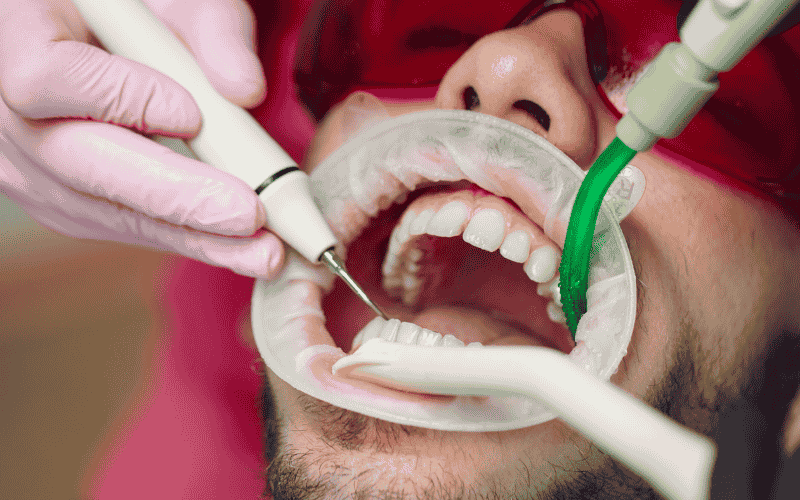
There are many things that can damage your teeth over the course of your life. Knowing the three main types of spots on teeth will help you choose the best way to get your smile back. These are the main types of stains you might find:
1. Surface Stains (Extrinsic)
The enamel is the hard top layer of your teeth that protects the softer dentin below. Surface stains, also called extrinsic stains, damage this enamel. Based on what caused them, these spots can often look yellow, brown, or even black.
External causes, like the foods and drinks you eat and drink, usually cause extrinsic spots. Some things that are known to stain teeth are coffee, tea, wine, dark berries, and tobacco products. It can also happen if you do not brush your teeth properly, especially if you do not remove plaque and tartar regularly, which lets spots stick to your teeth.
The good thing about extrinsic stains is that they do not go through the enamel to the inner parts of the tooth. Because of this, they are the easiest to get rid of, especially if you use a good home teeth-whitening method and brush your teeth every day.
Common causes of surface stains include:
- Bad way of brushing
- Food choices (latte, tea, wine)
- Using tobacco
- Berries that are dark, like blackberries and blueberries
You can get a better, brighter smile by giving up these bad habits and using the right whitening products.
2. Deep or Internal Stains (Intrinsic)
Deep stains, sometimes termed intrinsic stains, harm the dentin of the tooth. These spots are usually tougher to remove since they are deeper in the enamel. They can happen for many reasons, like medical conditions, drugs, or damaging the tooth.
Causes of Intrinsic Stains:
- Enamel Erosion: Over time, the enamel wears away, revealing more of the dentin below. This lets spots go deeper.
- Medications: Some medicines, especially antibiotics like doxycycline, can change the colour of the inside of the tooth.
- Fluorosis: Too much fluoride in the teeth while they are growing in can leave white or brown spots that are tough to fix.
Some home treatments may help lighten these spots, but most of the time, professional whitening treatments are best. These can include stronger bleaching agents like hydrogen peroxide or carbamide peroxide. The goal of these treatments is to get to deeper parts of the tooth and make the results more visible.
3. Age-Related Tooth Discolouration
Your teeth change naturally as you get older, just like the rest of your body. As time goes on, the enamel on your teeth wears away, revealing the dentin underneath. This can make your teeth darker and more yellow-brown.
It does not matter how well you take care of your teeth; this kind of staining will always happen. When enamel wears away, it reveals more of the darker dentin underneath. Of course, you can not stop this process, but you can handle it.
Age-related discolouration affects the dentin like intrinsic stains, thus professional whitening treatments or stronger at-home remedies are frequently the best way to address it.
Everyday Habits That Help Prevent Teeth Stains
Natural remedies can help make your smile brighter, but the best way to keep your teeth white is to practice good oral care and a few daily habits. By doing these easy things every day, you can keep your teeth healthy and free of stains.
Practice Consistent Oral Hygiene
Having a regular oral hygiene practice is the most important thing you can do to keep your teeth clean and stain-free. This also helps prevent issues like how to get rid of brown stains on teeth near gums, which often come from plaque.
To get the best results, use toothpaste with fluoride to improve your enamel and lower your risk of getting stains. Fluoride makes your teeth look better and keeps them from getting cavities. Also, flossing every day is important because it cleans between your teeth and along the gum line in places that your toothbrush might miss. This helps keep your teeth, especially the backs of them, white.
By taking care of your teeth and gums regularly, you not only avoid marks but also improve your dental health, which keeps your smile looking clean and white.
Rinse After Eating or Drinking Stain-Causing Foods
Chromogens and tannins are two chemicals that are known to leave stains on teeth. Some foods and drinks that have these chemicals in them are coffee, tea, and red wine. To stop these stains from becoming permanent, you should rinse your mouth with water right away. This makes it less likely that something will get broken.
After eating or drinking something bad, wait 30 minutes before brushing your teeth. If you brush your teeth too soon after eating, the soft enamel can get damaged. This gives it time to harden.
You can lower the risk of stains and keep your teeth whiter for longer by making this simple habit a part of your daily life.
Eat More Crunchy Fruits and Vegetables
Some raw foods that are high in fibre and can help keep your teeth clean are apples, celery, and carrots. These crunchy foods are good for your teeth because they clean them as you chew. They also make you salivate more, which is how your body fights off acids and bacteria.
Saliva not only neutralises acids, but it also helps remove food bits that can stain clothes. Eating more crunchy fruits and vegetables is good for your teeth and your health in general. This will also help you keep your smile bright and fresh.
When Home Remedies Aren't Enough
Many surface stains can be removed successfully with home remedies, but sometimes you need to get help from a professional. Even if you take good care of your teeth, some spots might not go away, or you might have other dental problems that need more advanced care. You need to see a doctor if:
- Stains do not get better with everyday care at home.
- You may feel pain or sensitivity in your teeth.
- Your teeth have pits or dark brown spots on them.
- Your gums hurt or are swollen.
In these cases, a dentist can examine your oral health and recommend expert treatments like teeth whitening to remove deeper stains and issues that home remedies may not fix.
Professional Whitening and Stain Removal Options
Have you tried, “how to remove brown stains between teeth at home?” While home remedies can help get rid of stains, sometimes you need to see a professional for deeper or more stubborn discolouration. Here are some things you can do to make your smile bigger and more beautiful:
At-Home Whitening Solutions:
- Whitening Toothpastes and Gels: You can buy whitening toothpastes and gels over the counter, which makes them easy to use to get rid of spots. Many of these items have mild bleaching agents in them, like hydrogen peroxide or carbamide peroxide, that whiten your teeth over time. Surface stains can be removed with regular use, but the results may be different based on how bad the stain is.
- Whitening Strips: Place these strips directly on your teeth; they contain whitening agents. For best results, use them carefully to avoid irritating your gums. For the best results, it is important to carefully follow the directions.
- Whitening Pens: With whitening pens, you can treat specific areas of your teeth with brightening agents, just like with whitening strips. They might work quickly for small spots in one area, but they might not be as good as other methods for whitening all over.
In-Office Whitening Solutions:
In-office treatments by a professional are best if you want results that are faster and more noticeable. The dentists will whiten your teeth better and safer with these choices than with over-the-counter products.
- Custom Whitening Trays: You can get custom whitening trays from your doctor. These trays are made to fit your mouth perfectly so that the whitening gel is applied evenly and consistently. It is likely that this choice will give you better results than doing it yourself, and you can use it to touch up your work after getting Professional Teeth Whitening treatments.
- Laser Whitening: Laser whitening is a very good way to get quick results. People use a whitening cream on their teeth and then put them under a laser light, which speeds up the process. This process can make your teeth whiter by several shades in just one visit.
- Professional Bleaching: This method uses stronger amounts of whitening agents than over-the-counter products, so it works better on deeper stains. A dentist’s office is usually the best place to do this process because the results are fastest and clearest.
These treatments are ideal when you want strong results for how to get rid of stain on teeth or how to get rid of black stains on teeth safely. You can get a better smile whether you do it yourself at home or see a dentist for in-office whitening. To get the best results, talk to a dentist about what treatment will work best for your current situation.
FAQs
Why do I get stains on my teeth even after brushing?
Some stains are hard to remove just by brushing, like those from food, drinks, and tobacco. For full removal of deep stains or spots that come from age, you should get professional help.
Can professional cleaning remove deep stains permanently?
Plaque and top stains can be removed by a professional cleaning, but deep stains might need to be whitened. If you keep using colouring agents, they might not come off for good.
Are natural whitening remedies safe for enamel?
When trying home remedies for stained teeth, be careful not to use them too much because they can damage the enamel.
What foods should I avoid to keep my teeth white?
Drinking coffee, tea, red wine, dark berries, and sugary snacks can colour your teeth and make plaque build up faster. Another way to keep your teeth from getting too much tooth decay is to use a straw.




